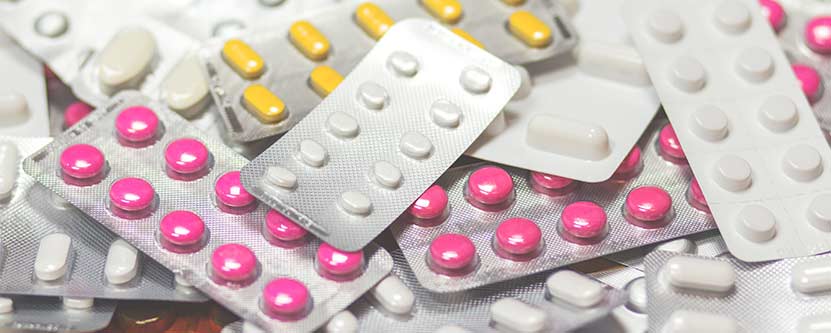Whenever you have a headache, back pain, menstrual cramps or fever, Paracetamol is the usual go-to pain killer. It is often prescribed for people with a common cold or tooth ache. Paracetamol is also known as acetaminophen, and is used in the treatment of both children as well as adults. This pain killer also provides relief from arthritis, to a certain extent.
[the_ad id=”6214″]
Doctors or physicians may prescribe this pain reliever frequently. The World Health Organization (WHO) has even identified it as one of the basic necessities of health care. However, there are a variety of side effects from Paracetamol that can be dangerous, harmful and even fatal. It is even possible for one to experience a Paracetamol over-dose, which could result in liver failure.
The side effects of Paracetamol are minor, if you take it according to the prescribed dosage. But there may be dire consequences to the consumption of this medicine without the recommendation of a doctor or medical expert.
Therefore, while taking acetaminophen (Paracetamol), it is important to take certain precautions. It is advisable for those who have allergies, drink excess alcohol or even those with liver failure to consult a general physician before taking Paracetamol, to avoid any adverse effect.
The medical recommendation of paracetamol a day is provided below:
- For adults and children aged 16 years and older: 500 mg-1 g every 4-6 hours up to a maximum of 4 g daily.
- For children aged 12-15 years: 480-750 mg every 4-6 hours up to a maximum of four doses daily.
- For children aged 10-11 years: 480-500 mg every 4-6 hours up to a maximum of four doses daily.
- For children aged 8-9 years: 360-375 mg every 4-6 hours up to a maximum of four doses daily.
- For children aged 6-7 years: 240-250 mg every 4-6 hours up to a maximum of four doses daily.
- For children aged 4-5 years: 240 mg every 4-6 hours up to a maximum of four doses daily.
- For children aged 2-3 years: 180 mg every 4-6 hours up to a maximum of four doses daily.
- For children aged 6 months-1 year: 120 mg every 4-6 hours up to a maximum of four doses daily.
- For children aged 3-5 months: 60 mg every 4-6 hours up to a maximum of four doses daily.
- For children aged 2 months following immunization: 60 mg, repeated once after 4-6 hours if needed.
Given below are almost all the side effects that consumption of Paracetamol beyond the prescribed limit might have on you:
Possible major side effects:
- Hepatitis:- The condition of Hepatitis can be drug-induced. Acetaminophen or Paracetamol is one of the drugs that can cause you to develop Hepatitis. This condition causes an inflammation of the liver, which leads to liver failure or damage to the liver. Small doses of certain medicines can result in liver damage, especially in patients with liver conditions. But large doses of Paracetamol can severely affect the liver, causing inflammation and a breakdown of the liver.
- Liver failure: Liver failure can be caused by conditions such as necrosis, cirrhosis and steatosis. These conditions might be the result of excessive consumption of drugs such as Paracetamol. Over time, the intake of this medicine can result in damage to the liver or acute liver failure. In the case of necrosis, the death of liver cells is usually caused by a severe condition of Hepatitis. Chronic Hepatitis can also cause cirrhosis, which is advanced scarring of the liver tissue. Whereas, steatosis is a condition in which fat accumulates in the liver. All three of these conditions can cause liver failure, and are a result of a regular consumption of Paracetamol or other drugs.
Some rare side effects of over-consuming Paracetamol are:
• Clay colored stools
• Jaundiced eyes and skin
• Giant hives and skin rashes
• Stevens-Johnson’s Syndrome; which causes blisters in the body or your skin to peel off, and can even lead to organ failure if not treated on time.
• Severe discoloration, red spots and eruptions of the skin
• Swelling of vocal chords
• Reduced platelet and WBC countThese side effects may be rare, but if you notice these symptoms, you should go for a check-up without delay.
An allergic reaction to taking Paracetamol would result in symptoms such as:
- Rashes: Though severe allergy to this medicine is uncommon, it is still possible to develop a rash in reaction to taking Paracetamol. An allergic rash causes you to develop bumps, itchiness and a change of color on your skin.
- Hives: If you develop hives on your skin, it may be an allergic reaction to taking Paracetamol. The hives make your skin itch, burn and cause you to develop red bumps on your body.
- Swelling: An allergic reaction Paracetamol may lead to swelling of the tongue, face, lips or throat.
- Nausea and troubled breathing: Dizziness and nausea along with trouble breathing are also symptomatic of an allergy to Paracetamol.
If you experience any of the above symptoms, you should seek medical aid as soon as possible. The doctor may advise you to discontinue the use of Paracetamol, and recommend an alternative medication.

